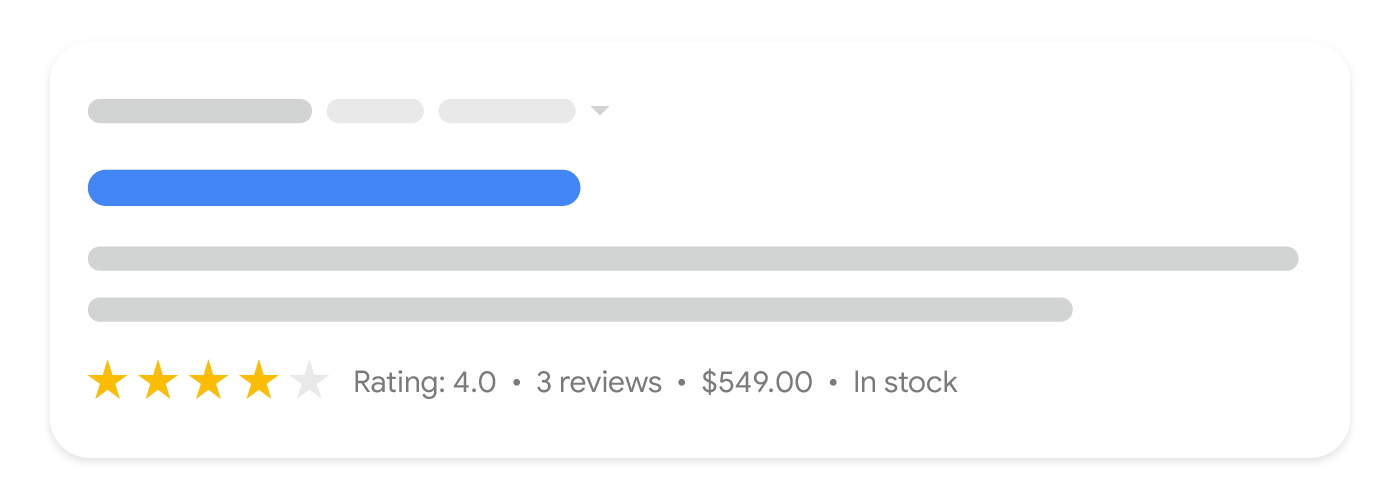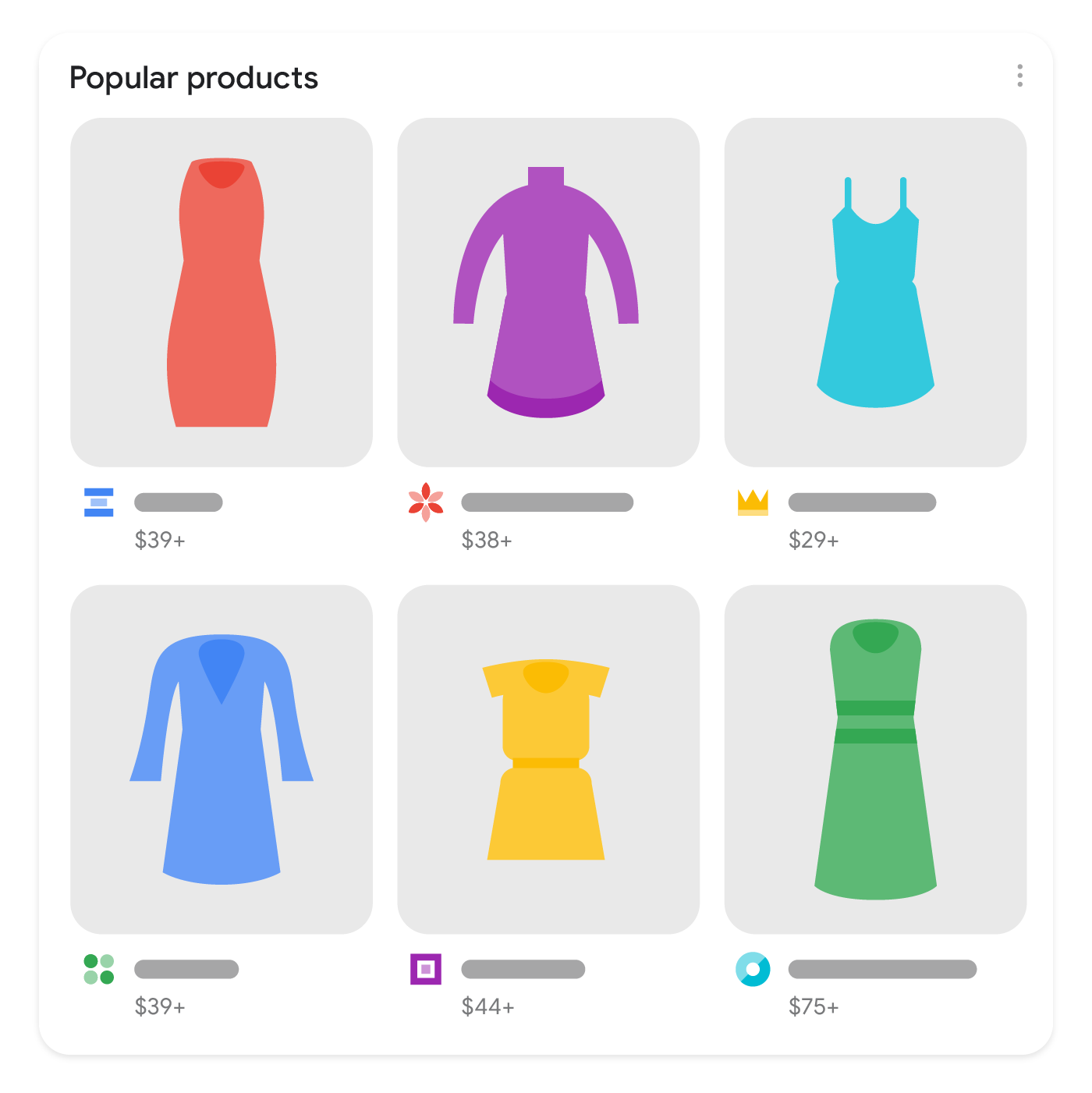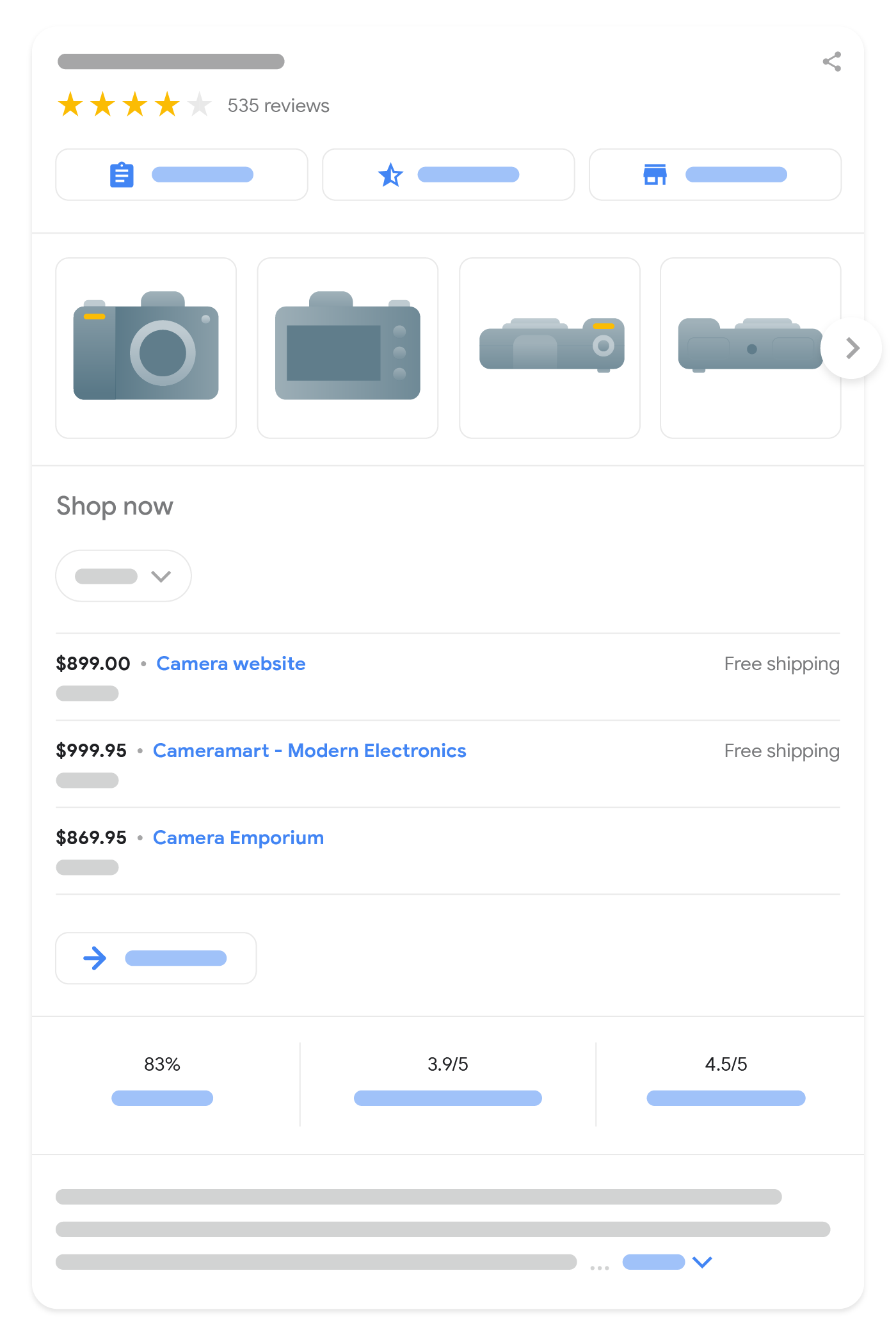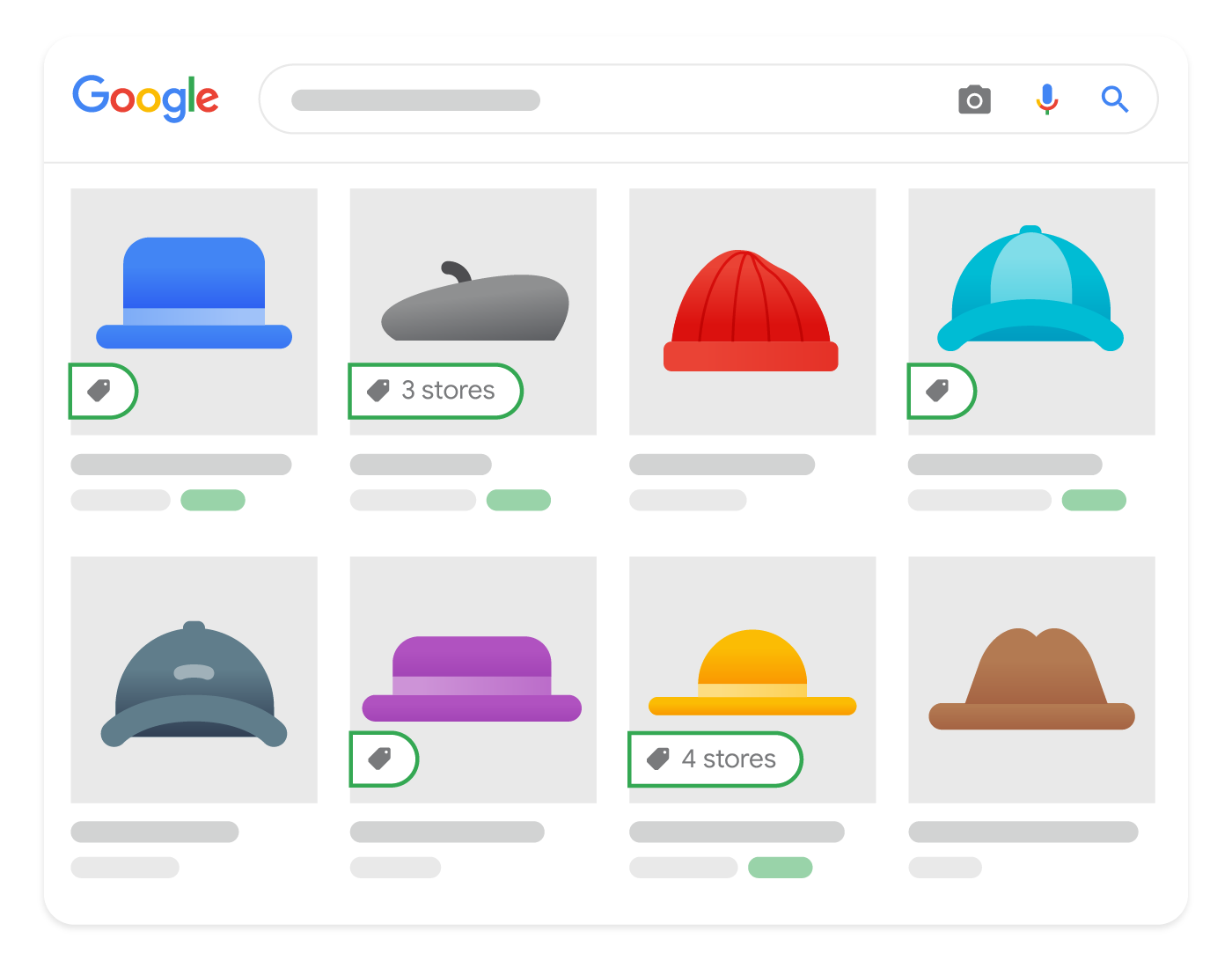구조화된 Product 데이터 소개
제품 페이지에 구조화된 데이터를 추가하면 Google 검색 결과에서 더욱 풍부한 방식으로 제품 정보를 표시할 수 있습니다(예: Google 이미지 및 Google 렌즈). 예를 들어 사용자가 검색 결과에서 가격, 재고, 리뷰 평점, 배송 정보 등을 즉시 확인할 수 있습니다.
어떤 마크업을 사용할지 결정하기
구조화된 제품 데이터에는 두 가지 기본 클래스가 있습니다. 사용 사례에 가장 적합한 유형에 해당하는 요구사항을 따르세요.
- 제품 스니펫: 사용자가 제품을 직접 구매할 수 없는 제품 페이지입니다. 이 마크업에는 광고소재 제품 리뷰 페이지의 장단점과 같이 리뷰 정보를 지정할 수 있는 추가 옵션이 있습니다.
- 판매자 등록정보: 고객이 제품을 구매할 수 있는 페이지에 사용합니다. 이 마크업에는 의류 사이즈, 배송 세부정보, 반품 정책 정보 등 자세한 제품 정보를 지정할 수 있는 추가 옵션이 있습니다.
두 제품 기능 사이에는 일부 중복되는 부분이 있습니다. 일반적으로 판매자 등록정보에 필수 제품 정보 속성을 추가하면 제품 페이지에도 제품 스니펫을 사용할 수 있습니다. 두 기능에 모두 자체적으로 개선된 기능이 있으므로 사이트의 컨텍스트에 적합한 마크업을 결정할 때 두 가지 모두 검토해야 합니다. 추가할 수 있는 속성이 많을수록 페이지에서 더 많은 개선사항을 적용할 수 있습니다.
판매하는 개별 제품의 구조화된 데이터 외에도 Organization 마크업 아래에 중첩된 전자상거래 비즈니스의 정책을 정의하는 구조화된 데이터를 추가하는 것이 좋습니다.
Google 검색에 쇼핑 환경이 표시되는 방식
이 페이지에서는 Google 검색 결과에 쇼핑 환경이 표시되는 방식을 설명합니다. 이 목록은 모든 항목을 포함하지는 않습니다. Google 검색에서는 사용자가 원하는 정보를 찾을 수 있도록 새롭고 개선된 방법을 지속적으로 모색하고 있기 때문에 시간이 지남에 따라 사용 환경이 바뀔 수 있습니다.
제품 스니펫평점, 리뷰 정보, 가격, 재고 등 추가 제품 정보가 포함된 텍스트 결과 |

|
인기 제품시각적으로 아름답게 표현된 판매용 제품 |

|
쇼핑 지식 패널판매자 목록과 함께 자세한 제품 정보를 표시(제품 식별자와 같은 세부정보 사용) |

|
Google 이미지판매 가능한 제품의 이미지(주석 포함) |

|
검색결과 개선하기
검색 결과 개선사항은 각 사용 환경의 상황에 따라 표시되며 시간이 지남에 따라 변경될 수 있습니다. 따라서 제품 정보를 사용할 실제 환경이 무엇이냐와 관계없이 가능한 한 많은 제품 정보를 제공하는 것이 좋습니다. 다음은 제품 리치 결과를 개선하는 몇 가지 방법입니다.
- 평점: 고객 리뷰 및 평점을 통해 검색 결과에 표시되는 모습을 개선합니다.
- 장단점: 제품 리뷰 설명에서 장단점을 파악하여 검색결과에서 강조 표시할 수 있습니다.
- 배송: 배송비, 특히 무료 배송 혜택의 제공 여부를 공유하면 쇼핑객이 총비용을 파악할 수 있습니다.
- 재고: 현재 제품 재고 여부를 고객에게 알릴 수 있도록 재고 데이터를 제공합니다.
- 가격 인하: Google에서 시간 경과에 따른 제품 가격 변동을 관찰하여 가격 인하를 계산합니다. 가격 인하가 표시된다고 보장할 수는 없습니다.
- 반품: 반품 정책, 반품 관련 수수료, 반품 기간 등의 반품 정보를 공유합니다.
Google 검색에 제품 데이터 제공하기
Google 검색에 풍부한 제품 데이터를 제공하려면 구조화된 Product 데이터를 웹페이지에 추가할 수도 있고, Google 판매자 센터를 통해 데이터 피드를 업로드하고 판매자 센터 콘솔에서 무료 등록정보를 선택할 수도 있고, 둘 다 할 수도 있습니다. Google 검색 센터 문서에서는 웹페이지에 있는 구조화된 데이터에 중점을 둡니다.
웹페이지의 구조화된 데이터와 판매자 센터 피드를 둘 다 제공하면 실험 환경을 사용할 수 있는 자격이 극대화되며 Google에서 데이터를 정확하게 이해하고 확인하는 데 도움이 됩니다. 일부 환경에서는 구조화된 데이터와 Google 판매자 센터 피드가 둘 다 제공된 경우 이 두 데이터를 결합하여 사용합니다. 예를 들어 가격 데이터가 페이지의 구조화된 데이터에 없는 경우 제품 스니펫에서 판매자 피드의 가격 데이터를 사용할 수 있습니다. Google 판매자 센터 피드 문서에 피드 속성에 관한 추가 권장사항 및 요구사항이 포함되어 있습니다.
Google 검색 외에도 Google 판매자 센터의 데이터 및 자격요건을 참고하여 Google 쇼핑 탭 자격요건에 관해 자세히 알아보세요.
